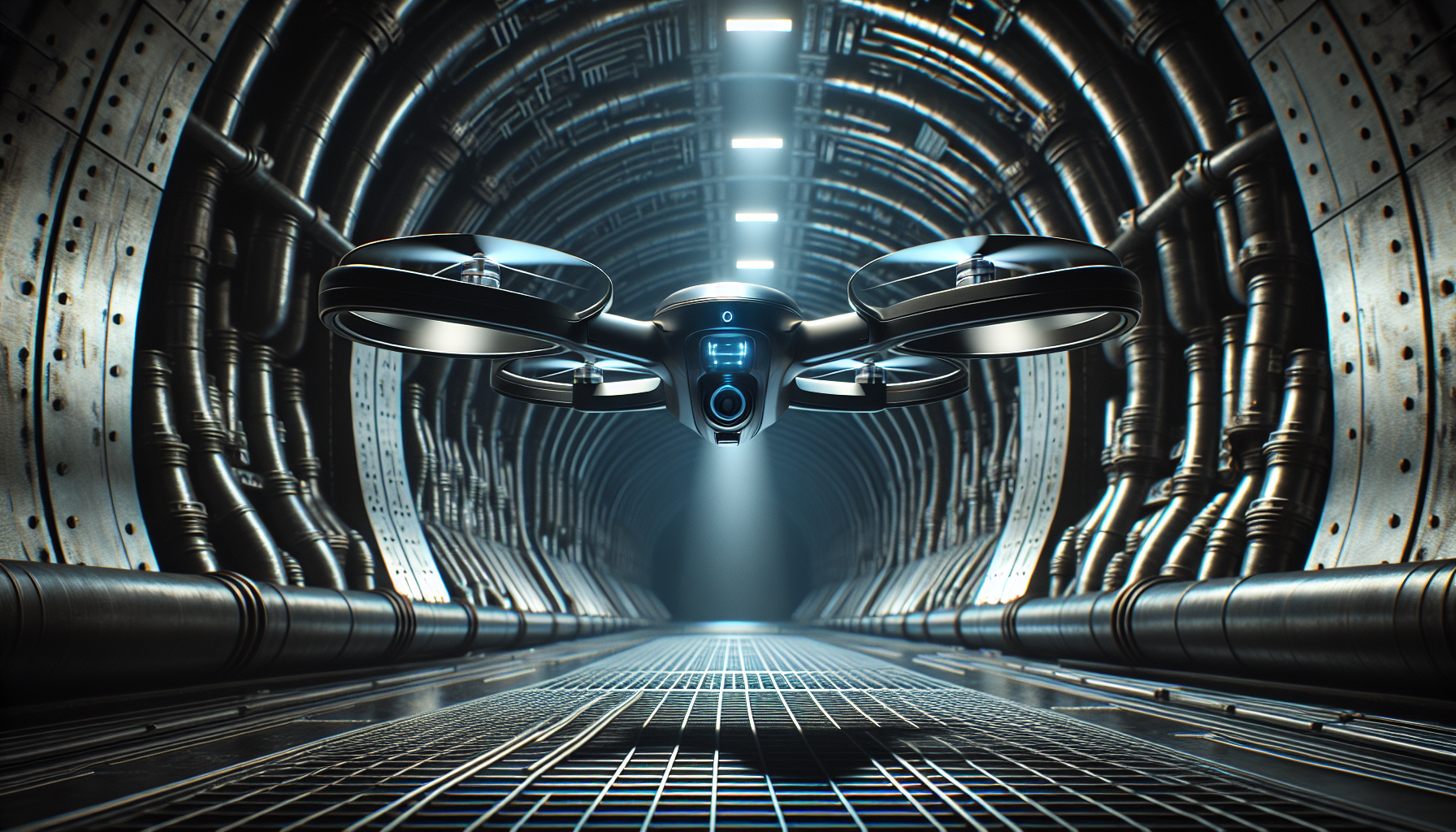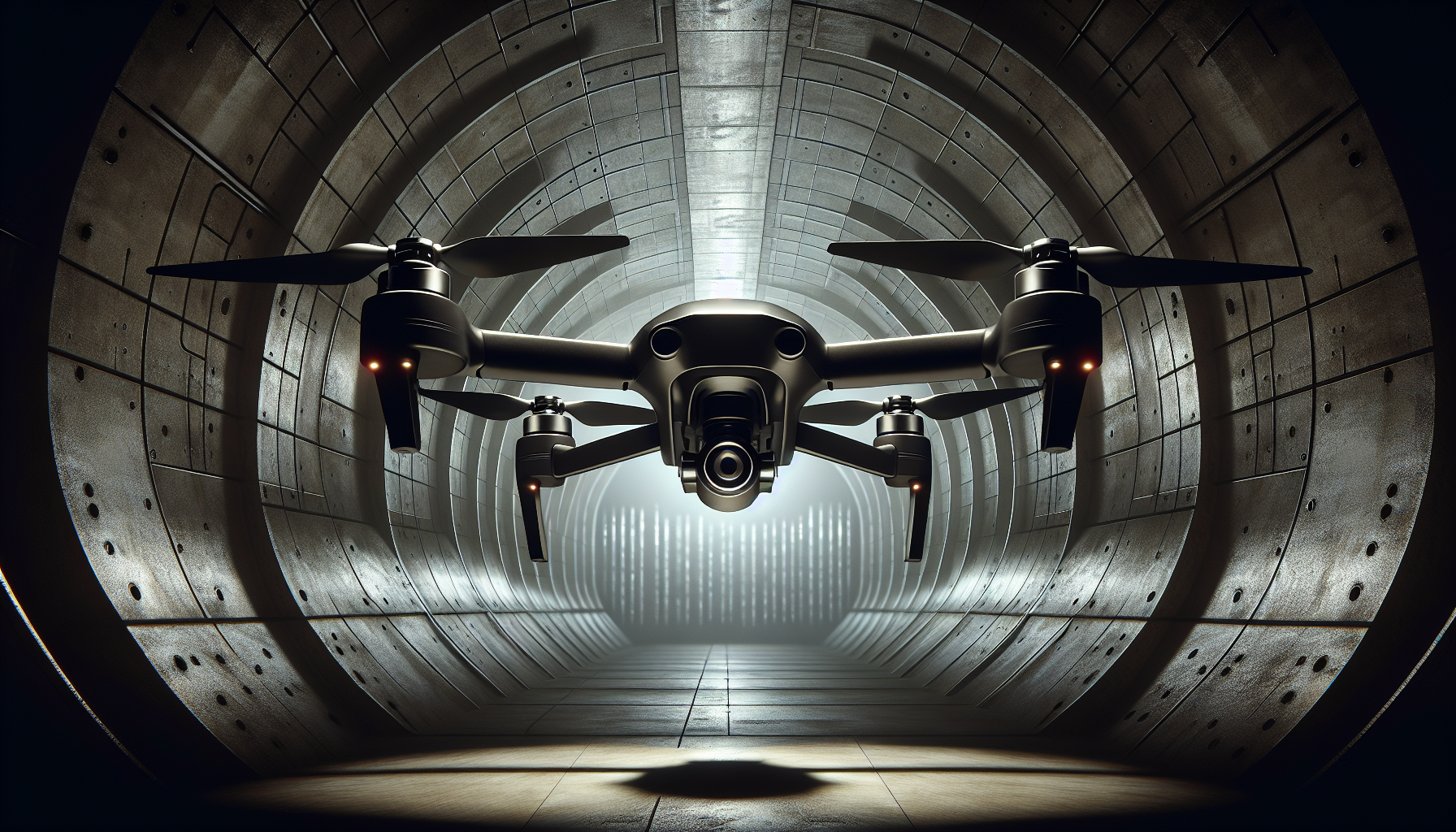The increasing prevalence of underground combat in modern warfare necessitates a critical examination of the United States’ preparations to confront this unique challenge. Historical experiences, particularly in Vietnam and more recent conflicts in Iraq, Afghanistan, and Ukraine, underscore the urgency for military readiness in subterranean environments. As adversaries increasingly resort to underground tactics to evade advanced surveillance technologies, the U.S. military is enhancing its training protocols and technological innovations to adapt to these changes.
This article delineates the evolving landscape of underground warfare, focusing on both the human and technological elements involved. From specialized training in simulated tunnel environments to the development of advanced technologies that can operate effectively in subterranean conditions, U.S. military strategies are shifting to address the complexities of fighting in darkness. By pooling resources and expertise, the military aims to ensure that it is not caught unprepared in future conflicts that take place beneath the surface.

Overview of Underground Combat
Definition of underground combat
Underground combat refers to military operations conducted in subterranean environments, including caves, tunnels, and urban underground structures. This mode of warfare necessitates a unique set of tactics, equipment, and training, as the challenges associated with confined spaces can fundamentally alter the nature of conflict. Ground forces often find themselves navigating a labyrinth of structures where conventional advantages such as air support and direct line-of-sight weaponry are significantly diminished.
Historical context and examples
The history of underground combat dates back millennia, with early evidence seen in the Assyrian conflicts around 4000 years ago. Various cultures have utilized subterranean tactics; most notably during the Vietnam War, the Viet Cong constructed extensive tunnel networks that provided strategic advantages against U.S. forces. Similarly, the tunneling activity in Iraq and Afghanistan by various militant groups re-intonated the importance of subterranean warfare in contemporary military strategy. The recent conflicts in Ukraine and the Gaza Strip highlight the ongoing relevance of underground tactics, as groups seek refuge from modern aerial warfare.
Challenges of underground environments
Engaging in combat underground presents multiple challenges, including limited visibility, communication difficulties, and the psychological toll wrought by constrained environments. Traditional navigation and operational capabilities, such as GPS and night-vision technology, are rendered nearly ineffective. Soldiers must adapt to a sensory-restricted environment where sound and smell often become vital navigational tools. Furthermore, physical factors such as air quality and the presence of booby traps and flooded passages complicate military operations.
Current Threat Landscape
Global hotspots for underground warfare
As military conflicts increasingly occur in urban centers, several global hotspots have emerged where underground combat is paramount. Regions like Ukraine, Palestine, and parts of South Asia are hotbeds for subterranean engagements. The proliferation of advanced militaries and non-state actors adept at utilizing underground networks presents ongoing threats not only to engagement forces but also to civilian safety and urban infrastructure.
Emerging threats and enemy tactics
The tactical ingenuity of non-state actors complicates the underground combat landscape. Adversaries utilize improvised explosive devices (IEDs), hidden tunnels, and ambush techniques tailored for the subterranean environment. By leveraging these tactics, foes can exert control over urban spaces, undermining superior military capabilities. The innovation of new weaponry specifically designed for underground use further shifts the balance, necessitating rapid adaptation on the part of conventional forces.
Impact of urbanization on combat strategies
Urbanization has created densely populated environments where traditional battle strategies can quickly become obsolete. The increasing prevalence of urban encroachment has resulted in a complex battlefield, necessitating a focus on subterranean operations as a significant element of modern combat strategies. Such environments demand new frameworks for engagement, integrating urban warfare principles with those required for effective underground operations.
Technological Innovations
Advancements in reconnaissance technologies
The challenges posed by underground environments have catalyzed significant advancements in reconnaissance technologies. Innovations such as miniaturized sensors and advanced mapping technologies allow military forces to gather intelligence without revealing their position. Utilizing advanced data analysis, these technologies facilitate augmented awareness of subterranean terrains, improving operational planning and execution.
Development of subterranean drones
Subterranean drones are an emerging technological innovation geared towards enhancing situational awareness in confined spaces. These devices are designed to navigate the complexities of underground environments, relay real-time intelligence, and even carry out reconnaissance missions without exposing personnel to undue risk. The incorporation of such drones is anticipated to radically alter the scope and effectiveness of underground combat operations.
Use of AI and machine learning in underground combat analyses
Artificial intelligence (AI) and machine learning algorithms have become pivotal in analyzing data concerning underground combat operations. By processing vast amounts of information, these technologies inform tactical decisions, enabling military planners to better anticipate enemy movements and devise counterstrategies. The analytical capabilities of AI offer a crucial advantage, lending precision to operations conducted in complex subterranean environments.
Training and Preparedness
Evolution of military training programs
Military training programs are rapidly evolving to address the distinct challenges of underground combat. Recognizing the necessity for specialized skills and tactics, modern military curricula integrate subterranean warfare into their foundational training, equipping soldiers with critical competencies tailored for these environments.
Realistic simulation environments for soldiers
To ensure effective preparedness, armed forces are increasingly employing realistic simulation environments that mimic underground scenarios. These training facilities expose soldiers to the psychological and physical demands of subterranean combat, thereby enhancing their adaptability and resilience. Such simulations foster essential decision-making skills under pressure, preparing troops for potential real-world situations.
Role of joint exercises in underground combat readiness
Joint exercises among various military branches augment preparedness for underground scenarios. By collaborating in simulated underground environments, different units learn to function cohesively, enhancing overall combat readiness. Such exercises facilitate the exchange of strategies and best practices, nurturing a comprehensive approach to subterranean operations across the military.

Infrastructure and Support
Designing subterranean facilities
The design of subterranean facilities is critical in supporting both defensive and offensive military operations. These facilities must prioritize functionality, resilience, and adaptability, ensuring that troops have access to essential resources while minimizing vulnerability to enemy detection. Proper design also involves contingency planning for emergency scenarios, ensuring personnel safety under adverse conditions.
Logistics and supply chain challenges
Addressing the logistical and supply chain challenges inherent in underground combat is paramount. Traditional supply routes may be compromised, requiring innovative solutions to maintain a steady flow of resources. Ensuring efficient logistics necessitates the incorporation of alternative transportation methods and methods for resupplying troops stationed in confined environments.
Emergency response strategies in underground combat zones
Emergency response strategies tailored for underground combat zones are essential for troop safety and mission success. The complexity of such environments necessitates detailed plans that account for potential threats, such as structural collapses or enemy ambushes. Establishing rapid response protocols enhances preparedness in critical situations, ensuring that personnel can be swiftly mobilized and supported.
Interagency Collaboration
Role of intelligence agencies
Intelligence agencies play a vital role in coordinating efforts related to underground combat. By gathering and disseminating actionable intelligence, these agencies enhance operational effectiveness, enabling military forces to operate with greater foresight. Statistically informed decision-making relies heavily on the extensive data analysis capabilities of intelligence entities.
Coordination between military and law enforcement
The coordination between military entities and law enforcement agencies is increasingly essential in addressing underground threats. By aligning objectives and strategies, both entities can effectively tackle the multifaceted challenges posed by non-state actors operating in subterranean environments. Collaborative strategies foster information sharing and resource pooling, facilitating a robust response to underground combat scenarios.
Integrating local resources in combat operations
Integrating local resources into combat operations presents significant advantages for military forces engaging in underground warfare. Understanding the geography and socio-political context of communities enables coalition forces to bolster efforts through localized intelligence and logistical support. Engaging with civilian populations fosters trust and enhances operational resilience.

Global Partnerships
Collaborations with NATO and allies
Global partnerships, particularly with NATO allies, are instrumental in addressing the complexities of underground warfare. Collaborative exercises allow for the sharing of best practices and technological advancements required for effective subterranean combat. Increased interoperability among forces fosters a collective strength necessary to confront shared threats.
Joint training exercises with foreign militaries
Engaging in joint training exercises with foreign militaries enhances preparedness for underground combat. These exercises expose participating units to diverse techniques and strategies, facilitating a comprehensive understanding of underground dynamics across different military cultures. Such collaborative training fosters relationships and strengthens operational capabilities.
Information sharing on underground combat technologies
The exchange of information regarding technological advancements in underground combat is crucial for sustaining military effectiveness. Sharing innovations, tactics, and strategic insights among allied nations allows for adaptive responses to emerging threats. As different defense entities invest in research and development, fostering this cooperative environment enhances global readiness.
Ethical Considerations
Rules of engagement in urban warfare
The rules of engagement in urban warfare necessitate careful consideration, particularly in underground combat scenarios. Protecting civilian lives and minimizing collateral damage must be prioritized even as military forces engage hostile actors. The establishment of clear guidelines is paramount to maintaining ethical standards in subterranean warfare.
Civilian safety and considerations in underground combat
The safety of civilians is a crucial consideration in underground combat operations. Assessing potential risks to non-combatants must be an integral component of military planning. Effective strategies are necessary to mitigate civilian vulnerabilities while achieving operational objectives, requiring innovative approaches to differentiate between combatants and non-combatants.
Debate on the use of advanced technologies
The debate surrounding the use of advanced technologies in underground combat raises significant ethical questions. While innovations can provide strategic advantages, they also pose potential risks, such as reliance on automated decision-making systems or the inadvertent escalation of conflicts. A careful balance must be struck between leveraging technology and adhering to ethical standards.
Future Trends in Underground Warfare
Predicted advancements in combat strategies
Future advancements in combat strategies relevant to underground warfare will likely involve the integration of emerging technologies and perspectives. Innovations such as virtual reality training and multi-sensory simulation environments will enhance operational capabilities. Military strategists predict that these advancements may lead to the development of hybrid strategies that effectively merge traditional and modern tactics.
Long-term impact of underground warfare on military doctrine
The rise of subterranean warfare is poised to have a significant long-term impact on military doctrine. As conflicts increasingly occur in urban settings, military institutions will likely evolve their approaches to encompass integrated strategies for underground operations. These adaptations may also influence broader military training frameworks, shaping future generations of military personnel.
Potential threats posed by non-state actors
The continued emergence of non-state actors presents an evolving threat in the context of underground warfare. These groups are harnessing innovative tactics and technologies, resulting in volatile scenarios that necessitate rapid strategic adaptations. As the landscape of warfare develops, military forces must anticipate and respond to these non-state threats, ensuring a comprehensive understanding of underground dynamics.
Conclusion and Summary
Recap of underground combat challenges
Engaging in underground combat is fraught with challenges that can significantly alter military strategies. The complexities of operating in confined environments necessitate unique adaptations to training, technology, and logistics. Recognizing these challenges lays a foundational understanding of the intricacies involved in subterranean warfare.
Importance of ongoing innovation and training
Ongoing innovation and training are essential for preparing military forces to confront underground combat scenarios effectively. Advancements in technology must be coupled with enhancements in training methodologies to ensure readiness against evolving threats. Such proactive measures are vital for maintaining operational effectiveness in increasingly complex battlefields.
Final thoughts on preparedness for future conflicts
As the nature of warfare continues to evolve, preparedness for subterranean combat remains paramount. Military forces must remain vigilant in adapting to these challenges, integrating cutting-edge technologies and techniques while upholding ethical standards. A comprehensive approach to underground warfare will enable military institutions to navigate and respond to future conflicts with confidence.
